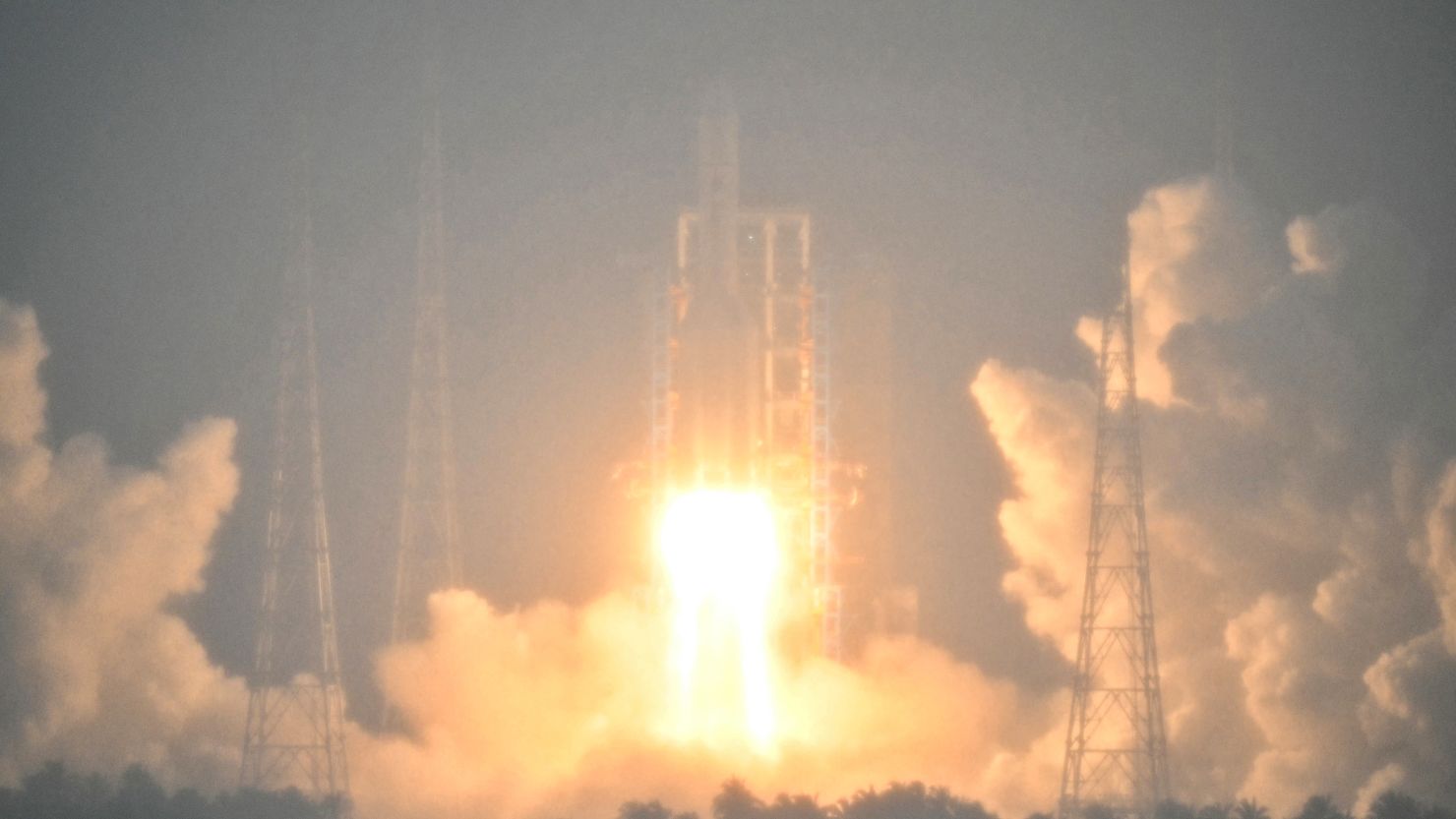(CNN) — China on Friday launched an uncrewed lunar mission aimed at bringing back samples from the far side of the moon for the first time, in an important step for the country's ambitious space program.
The Chang'e-6 probe, China's most complex robotic lunar mission to date, marks a major milestone in the country's efforts. To become a dominant space powerIt plans to land astronauts on the moon by 2030 and build a research base at its south pole.
The probe, launched on a Long March-5 rocket from the Wenchang Space Launch Center on Hainan Island in southern China, looks at the strategic and scientific benefits of expanding lunar exploration to a growing number of countries, including the United States. An increasingly competitive field.
During the 53-day journey, the Chang'e-6 lander will land in a large crater on the far side of the moon that will never face Earth. China became the first and only country to land on the far side of the moon during its 2019 Chang'e-4 mission.
Any remote samples recovered by the Chang'e-6 lander could help scientists look at the evolution of the Moon and the Solar System, and provide important data to advance China's lunar ambitions.
“The goal of Chang'e-6 is to develop lunar retrograde orbit design and control technology, intelligent sampling, takeoff and ascent technologies, and automatic return of samples to the far side of the moon,” said Ge Ping, deputy director of the China National Space Administration's Lunar Exploration and Space Administration. Director of the Engineering Center, from the launch pad last week.
Ambitious work
The Chang'e-6 mission will be a key test of China's space capabilities to realize President Xi Jinping's “eternal dream” of making the country a space power.
China has made rapid space advances in recent years in a field traditionally led by the US and Russia.
With the Chang'e project launched in 2007, named after the moon deity of Chinese mythology, in 2013 China became the first country in nearly four decades to land a robot on the moon. In 2022, China completed its own orbital space station Tiangong.
The technically complex Chang'e-6 mission builds on both the record landing of Chang'e-4 on the far side of the moon in 2019 and the success of Chang'e-5 in 2020, which returned to Earth with lunar samples. .
In this case, Chang'e-6 relies on the Queqiao-2 satellite launched into lunar orbit in March to communicate with Earth from the far side of the Moon.
The probe consists of four parts: an orbiter, a lander, an ascent module and a reentry module.
The Chang'e-6 lander is a project to collect lunar dust and rocks after landing in a crater formed about 4 billion years ago in the vast South Pole-Aitken Basin, about 2,500 kilometers in diameter.
An ascent spacecraft will carry samples to lunar orbit for transfer back to the entry module and return to Earth.
According to James Head, a professor at Brown University who collaborated with the Chinese scientists leading the mission, the complex mission “includes all the steps” needed to land Chinese astronauts on the moon in the coming years.
In addition to bringing back samples that could provide “fundamental new knowledge about the origin and early history of the Moon and Solar System,” the mission serves as “robotic training for these operations” to take astronauts to the Moon and back. said.
China plans to launch two more Chang-e series missions as it nears its 2030 goal of sending astronauts to the moon before building a research station at the moon's south pole in the next decade.
Chang'e-7, planned for 2026, aims to search for resources at the moon's south pole, while Chang'e-8, about two years later, could study how to use lunar materials in preparation for building the moon. Research site, as Chinese officials say.
Competition venue
Friday's launch comes as many countries ramp up their lunar programs amid growing interest in potential access to deep space resources and the exploration that successful lunar missions could bring.
Last year, India landed its first spacecraft on the moon, while Russia's first lunar mission in decades ended in failure when its Luna 25 probe crashed into the lunar surface.
In January, Japan became the fifth country to land a spacecraft on the moon, although its Moon Sniper lander had power problems due to an incorrect landing angle. The following month, IM-1, designed by the Texas-based private company Intuitive Machines with funding from NASA, landed near the South Pole.
The landing is one of several commercial missions planned to explore the lunar surface before the American-made spacecraft, more than five decades old, attempts to return American astronauts there in 2026 and build its science base camp.
Last month, NASA Administrator Bill Nelson acknowledged that China's speed and concerns about its intentions are fueling the U.S. rush to return to the moon decades after the Apollo missions that carried its men.
“We believe that most of the so-called civilian space program is a military program. In fact, I think we're in a race,” Nelson told lawmakers last month, expressing concern about the possibility that China might try to ban the United States. The United States or other countries may have access to certain lunar regions first.
China has long supported the peaceful uses of outer space and, like the United States, has sought to use its space prowess to foster international goodwill.
This time, China said the Chang'e-6 mission will carry scientific instruments or payloads from France, Italy, Pakistan and the European Space Agency.





